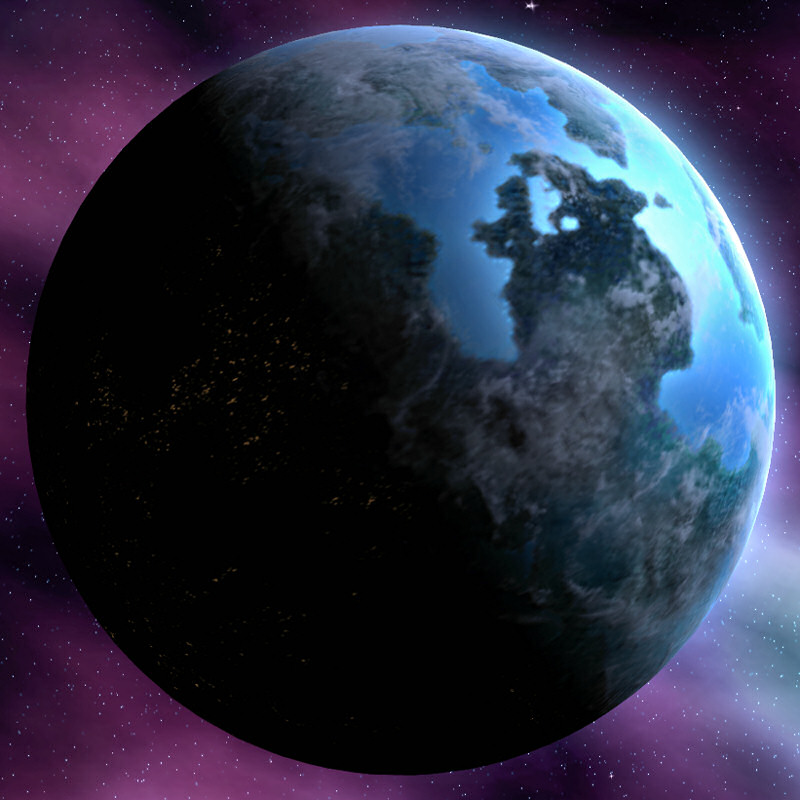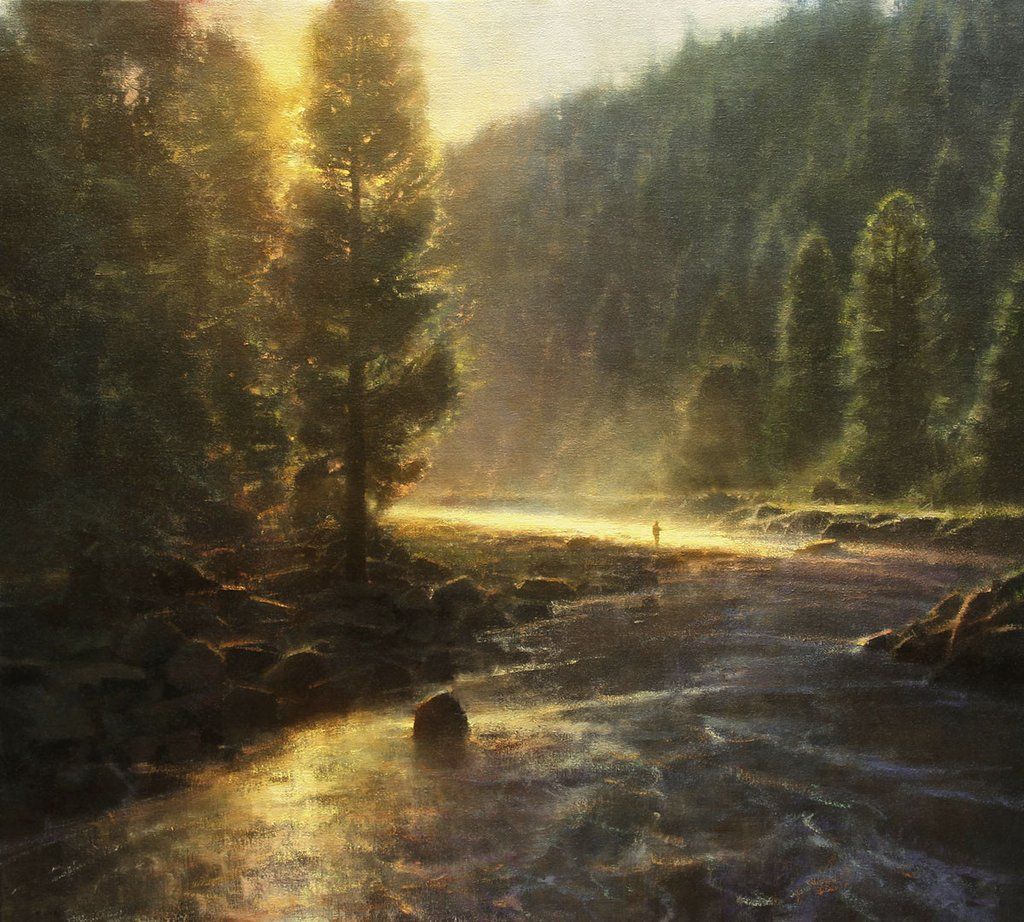Mandalore
"Mandalore. Right turn off the Hydian Way. Can't miss it."Mandalore was the fifth planet in the Mandalore system of the Outer Rim Territories, not far from the Hydian Way trade route. The homeworld of the multi-species cultural group known as the Mandalorians, the planet was known as Manda'yaim in the Mandalorian language and was named after the legendary conqueror of the vibrant world, Mandalore the First. Mandalore the First's Taung warriors slew the indigenous mythosaurs and tamed the savage landscape, solidifying Mandalore's place as a power base and the center of Mandalorian space for millennia to come. Mandalore was covered in a rich natural landscape, largely unspoiled due to its sparse sentient population. The world was blanketed in lush veshok tree forests, dense jungle, sprawling hills, and grassland well suited to farming, inhospitable deserts of white sand, and numerous rivers, lakes, and seas. It was also the only known world in the galaxy, with the exception of its moon Concordia, to possess the unique, nearly indestructible iron ore known as beskar, an element capable of withstanding blows from even a lightsaber. An independent world ruled by the Mand'alor—the leader of all the Mandalorian clans, following the tradition established by Mandalore the First—the planet Mandalore found itself the ally and enemy of numerous galactic governments and groups throughout the years. Though largely abandoned by the early Mandalorian Crusaders, who continuously sought fresh conquests, Mandalore became the fallback point for many defeated Mandalorian Neo-Crusader warriors after the end of the Mandalorian Wars. With the rise of the pacifist New Mandalorian faction and their efforts to reform Mandalore's warrior ways, distancing themselves from the violent past after the disastrous events that lead to their formation, Mandalore was accepted by the Galactic Republic and was known as New Mandalore throughout the isolationist society that the New Mandalorians created. Originally neutral during the Clone Wars, after the New Mandalorian capital fell to the machinations of the Death Watch, the pacifist faction's influence dwindled. Later, when Mandalore the Resurrector came to power, the planet broke from the Republic and joined the Confederacy of Independent Systems against the oppressive Coruscant regime, only to come under the heel of the Galactic Empire following the end of the Clone Wars. With the fall of the Empire, Mandalore began a steady period of recovery up until the Yuuzhan Vong's invasion of the galaxy, and the devastation the extragalactic invaders wrought upon Mandalore. The resilient world did not yield to the Vong's attempt at destruction, however, and by the Second Galactic Civil War, Mandalore was in the midst of a prosperous resurgence brought on by the discovery of fresh lodes of beskar iron that had been exposed during the Yuuzhan Vong attack. Mandalore suffered an attack by elements of the Imperial Remnant loyal to the Sith Lord Darth Caedus near the war's end, yet persevered, continuing to grow and developing ties with the Verpine and the Galactic Alliance. Under the leadership of Mand'alor Yaga Auchs, the Mandalorians withdrew from the Sith–Imperial War and remained on Mandalore throughout the Second Imperial Civil War, focused on bettering their world.
Geography
"I've never seen Mandalore. What's it like?"Mandalore was located in the region of the galaxy known as the Outer Rim Territories, near the Hydian Way trade route, where it occupied the fifth orbit of the Mandalore sector's cognominal Mandalore system, between the orbits of Kalevala and Mandallia. It sat at the end of the hyperspace lane known as the Mandalorian Road, an ancient route that connected Mandalore with the planet Corsin in the Inner Rim. A terrestrial world spanning nine thousand, two hundred kilometers in diameter, Mandalore possessed standard gravity and two moons, including the one-time mining base and agricultural center, Concordia. Unique to Mandalore and the Concordia moon was beskar iron ore, a nearly indestructible metal capable of withstanding blows from even a lightsaber, and used by Mandalorian metalsmiths to forge armor, weapons, and starships. A year on Mandalore comprised three hundred and sixty-six days, and each day was made up of nineteen hours. Mandalore possessed a breathable atmosphere and a climate that varied by region. Before the rise of the Mandalorians, Mandalore was dominated by the gigantic mythosaurs. The enormous beasts were said to rival cities with their size, but when the Taung warriors arrived on Mandalore, they set to slaughtering the creatures as part of their conquest of the new world, leaving only their massive skeletons behind to bleach in the light of Mandalore's sun. Native veshok trees covered much of Mandalore's northern hemisphere, such as the Olankur region of its northern continent, forming a dense forest that stretched nearly as far as the polar ice caps. Winters in the north of Mandalore often saw significant snowfall, and bitter cold temperatures. The herbivorous animals called shatuals could be found living within the veshok forests, as could the intelligent, six-legged strills that preyed upon them for food. Tall, long-lived galek trees with their silver-colored leaves were also a common sight on Mandalore, as were the golden amber ferns that grew in and around galek groves. Wild mushrooms were known to grow on and around Mandalore's trees, and a number of a serpentine rawl could be found in the Mandalorian wild, transplanted from their natural habitat on Naboo. Forty-five degrees north of Mandalore's equator, atop a flat granite hill nestled along a bend in the kilometers-long Kelita River, sat the city of Keldabe. Since at least 3924 BrS, Keldabe had served as the capital of Mandalore, and the center of government for much of Mandalorian space. However, following the foundation of the New Mandalorian faction, the reformist sect declared the domed city of Sundari, located in one of Mandalore's expansive and inhospitable white-sand desert regions, to be their capital. Positioned out on the flat desert plain, Sundari was constructed over a large, active beskar mine, surrounded by sand and the giant cube-cities built by the innovative builders of the New Mandalorian people who rejected the ways of Mandalore's warrior clans. Keldabe, however, found itself surrounded by woodland and the waters of the Kelita, along with gentle green hills that spread outward to fertile grassland the more agriculturally-minded Mandalorians took advantage of for farming. Keldabe boasted two of Mandalore's most renowned landmarks, the hundred-meter-tall tower of the MandalMotors company headquarters, and the Oyu'baat hotel and tapcafe, one of the oldest establishments on the planet. With no formal palaces or offices among the warrior clans, the Oyu'baat was also an informal meeting place for the Mand'alor and clan chieftains, making it the unofficial center of Mandalore's clan-based government until 75 ArS, when this role was shared by the newly established community building, MandalMotors Hall. Other cities and settlements littered Mandalore's surface, including the Keldabe suburb of Bralsin near the Kelita valley, and the small town of Shuror. Most of Mandalore's settlements were built within a heavy fortification that contributed to the ease with which they could be defended from potential invaders. An example of such a settlement was the hill-fort town of Norg Bral, home to several members of Clan Bralor. The water supply to these settlements was provided by lengths of pipelines and deeply-dug wells, often making use of both to ensure the certainty of available water. Further south and away from Keldabe, Mandalore's tropic regions boasted warmer weather and was known for varos fruit, where it could be found growing. Roads on Mandalore were rarely straight, designed so as to grant Mandalorians the advantage in ambushing and pinning down hostiles as they traveled. Traditional dwellings known as vheh'yaime—made from wood, woven vines, and matted mud—were a common choice for the homes of Mandalore's warrior clans and numerous vheh'yaime of varying sizes could be found across Mandalore. Due to the varied nature of the different species and backgrounds that comprised the greater Mandalorian people, the architecture of Mandalore differed greatly depending on the region and that area's particular inhabitants, from towers of transparisteel and granite to durasteel, and even tree-bound abodes.
"I'd like to say it's paradise, but it's as rough as a bantha's backside, and half as pretty."
Natural Resources
See Beskar
Type
Planet
Location under
Included Organizations
Owning Organization
Related Ethnicities
Characters in Location
Related Materials
Remove these ads. Join the Worldbuilders Guild










Comments